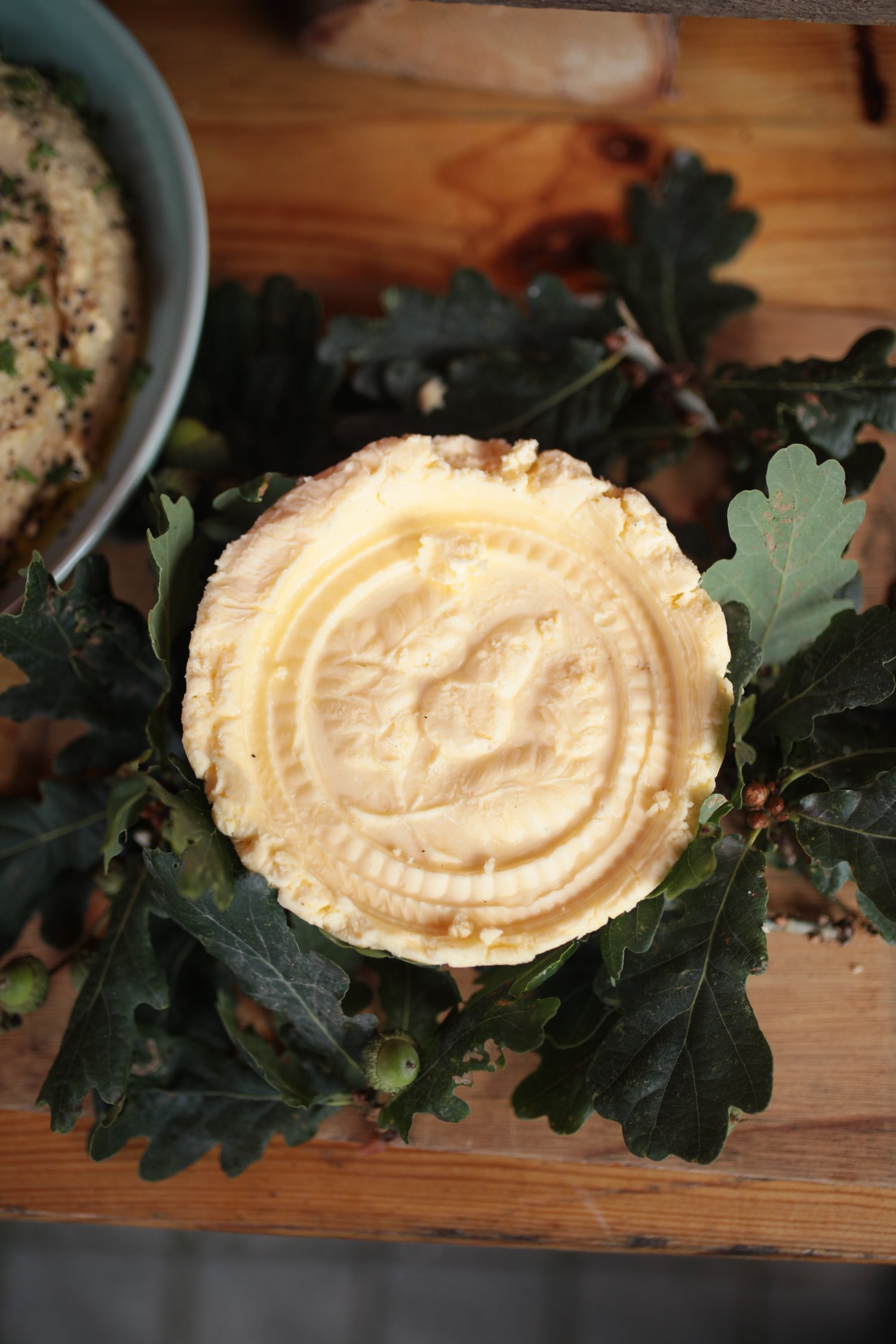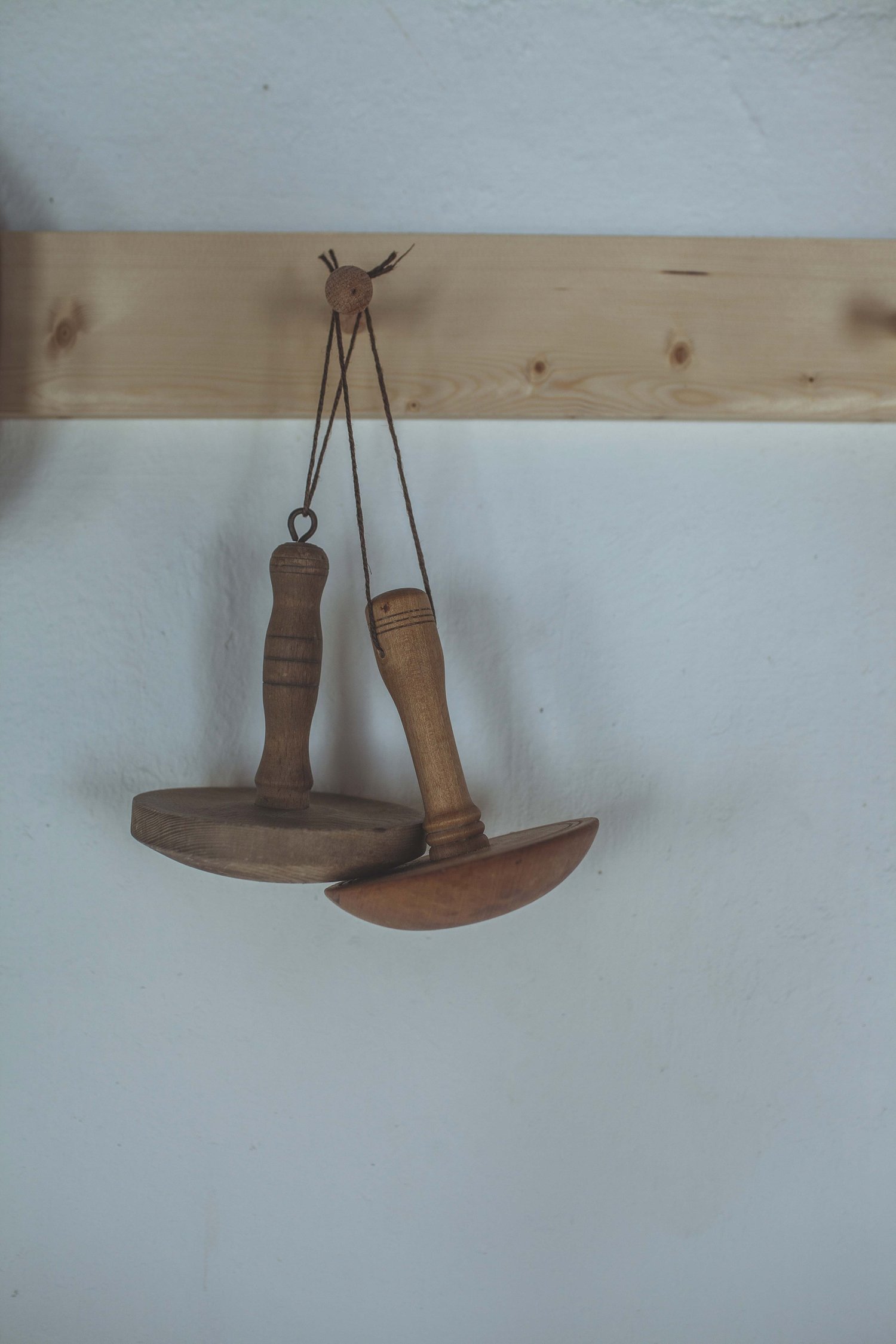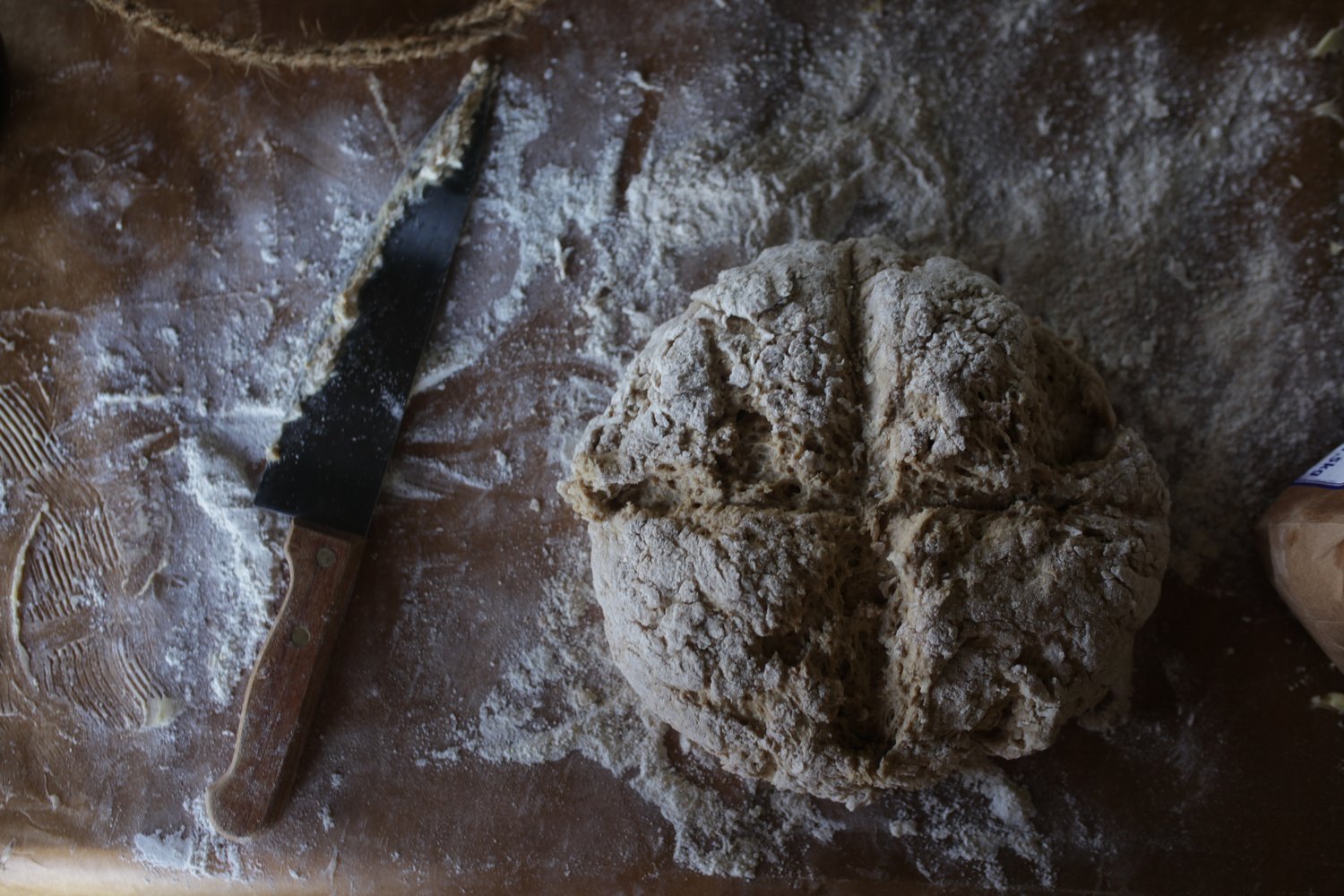Our relationship with butter has gradually changed over the past 200 years, and our palate has shifted to accept sweet-cream butter from the fresh cream available by milking on a large scale.
Butter was once crafted only when there was enough cream to work with, usually after several milkings throughout the week. This meant the cream would ferment slowly and the butter would microbiologically develop interesting flavours of the farm’s single herd raw milk and its subsequent acidification would help preserve it.
Across Europe this would be a point of pride with farmers and herders, and each pat of butter, worked again by hand, would be stamped with the hand-carved maker’s mark, personal symbols usually celebrating the specific place where the butter is made. Buttermilk is the byproduct, made sour through this natural fermentation it is used traditionally in bread-making and enjoyed as a refreshing drink.
Join us for in a morning of learning how to churn authentic butter, and learn traditional recipes for life over lunch.
WHO IS THIS COURSE FOR?
This course is for anyone interested in learning long established techniques of transforming milk into butter, using time-honoured and completely natural methods. The mass produced butter which we openly consume nowadays simply has nothing to do with its origin story. Real butter is hard to come by but is not difficult to make, and it is the closest thing we have to alchemy.
This course is for anyone who wants nurture their inherent ability to preserve food. Cooks, homesteaders, preppers, anyone looking to extend the shelf-life of their food and save money by not throwing things away unnecessarily. All the knowledge imparted on this course comes from the real techniques of fringe artisans, who have developed this very human skill for thousands years in a time before plastics and chemicals. This course aims to give you a profound understanding of the arc of a food’s life through its traditional crafting, and will change the way you eat.
THE SHAPE OF THE DAY
09:30 - 10:00 WELCOME!
Arrive at the Booley for coffee, tea (raw milk only!) and scones with sweet-cream butter and jam. The space has been made to honour the Irish tradition of Booleying, an ancient form of pastoralism for moving livestock to upland pasture for the production of butter and cheese.
10:00 - 10:30 THEORY AND TASTING
A talk about raw milk and butter and the importance of provenance. The un-pasteurised milk is from a single estate herd where we break down flavour and texture, alongside some other rare examples of heritage butter including cultured Irish and technically “illegal” examples from the mountains of Piedmont in Italy.
10:30 - 11:30 CHURNING
We begin the process of skimming the raw milk and inoculating pasteurised cream to demonstrate how to make cultured butter. We then look at different methods of churning the cream into butter with a variety of traditional methods, including how to make a whisk from pine trees. A traditional rhythmical labour, we accompany this transformation with traditional churning songs.
11:30 - 12:30 WASHING, SHAPING AND BAKING
We wash the butter by hand, salt it and begin shaping it with traditional butter paddles. The buttermilk is used to make bread which we bake together on an open fire.
12:30 - 13:00 CARVING
In the lead up to lunch, we share the task of carving a simple stamp with which to sign our butter.
13:00 - 14:00 LUNCH
Curated to showcase traditions in butter, examples will be:
MENU
Illegal alpine butter with a single anchovy on our bread
Smoked fish and cultured butter on home made boxty
Traditional Irish Champ paired with a glass of sour buttermilk
14:00 - HOME!
It’s time to head home with your hand-made butter, wrapped in wax paper and tied off with twine.











